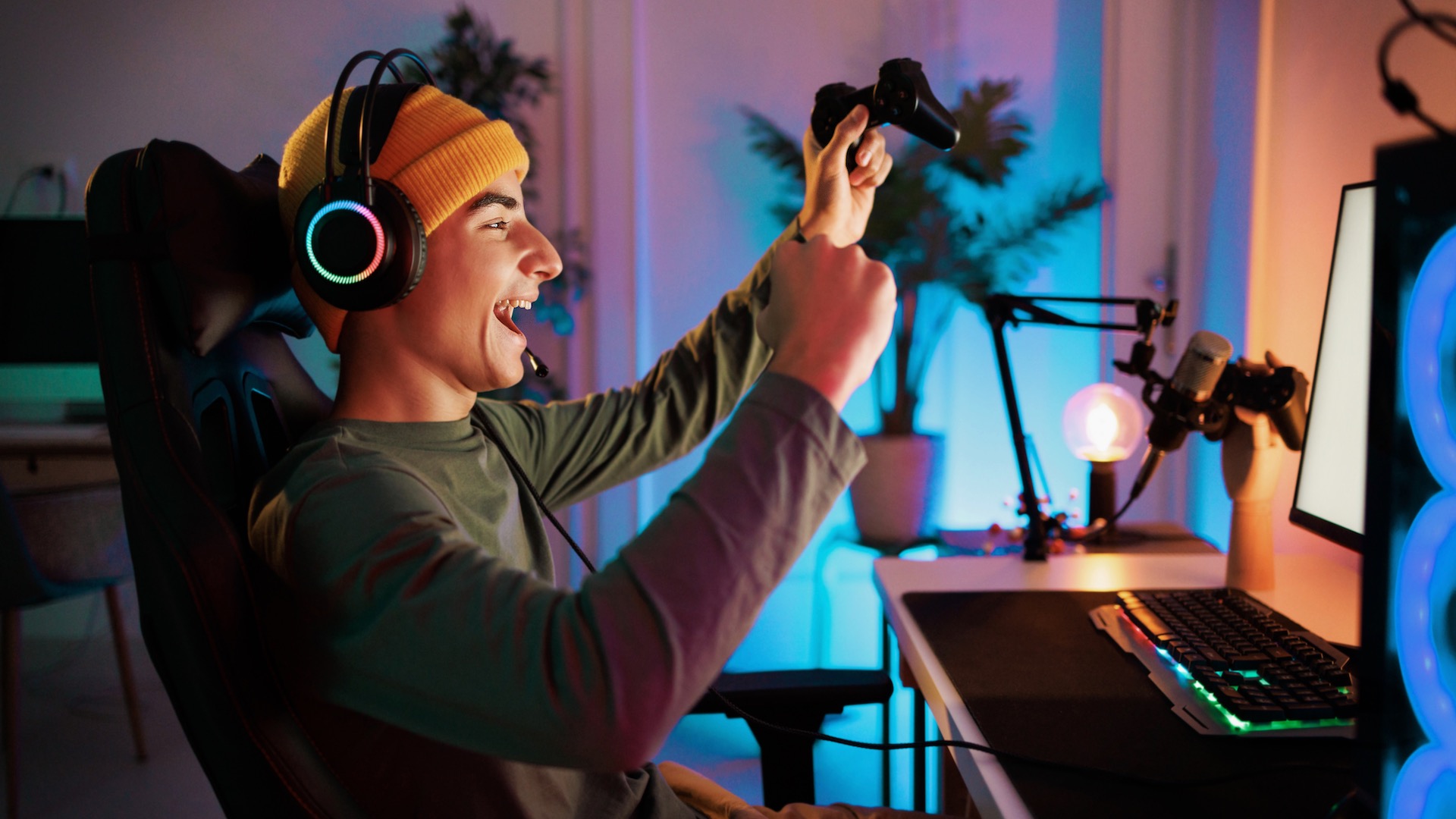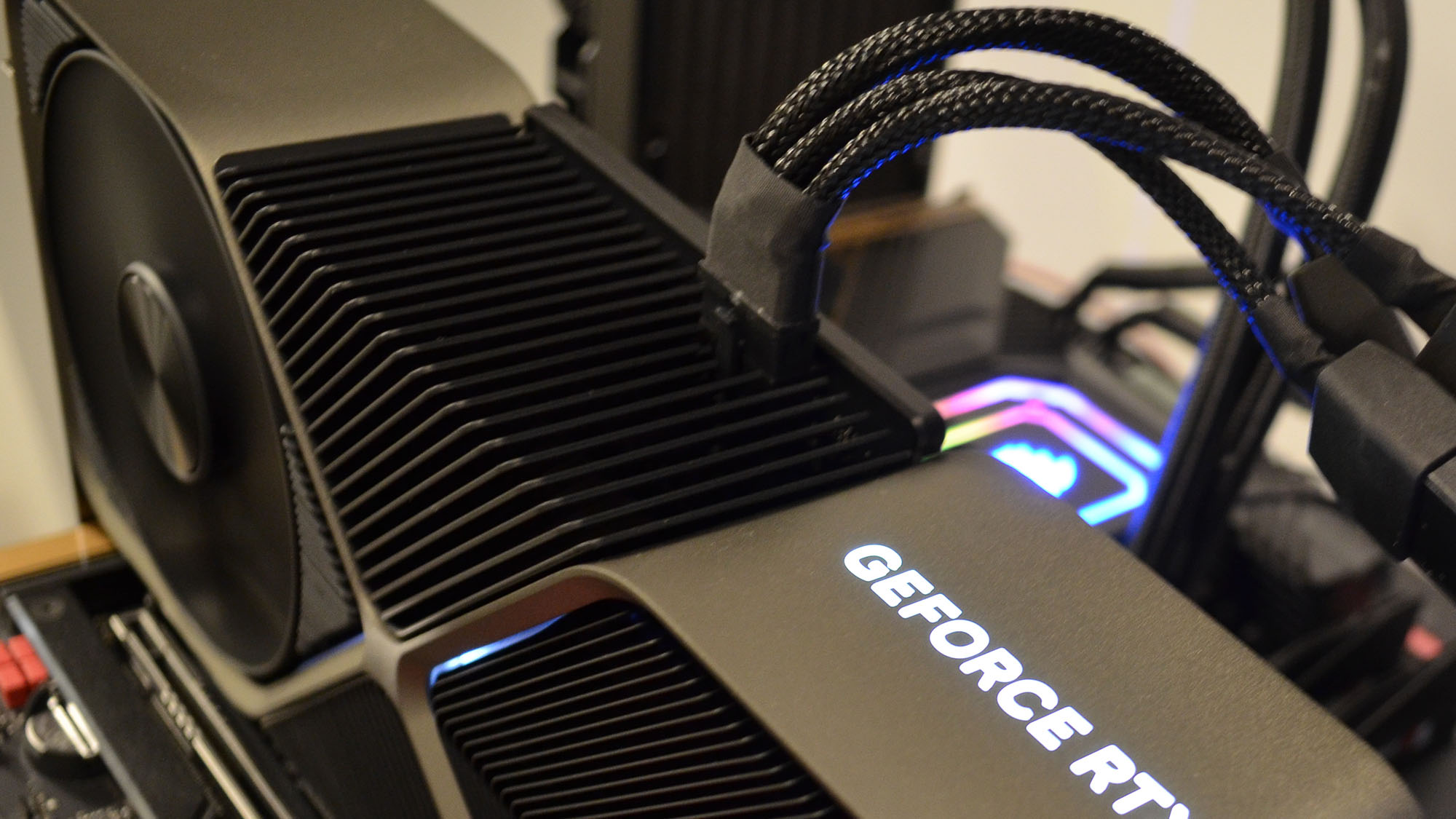Got buyer's remorse with your 8GB graphics card? Nvidia's AI texture compression promises huge benefits for GPUs with stingy amounts of memory
Does this explain why Nvidia is confident that 8GB is enough?

- Nvidia's Neural Texture Compression feature just became more efficient
- It got this boost thanks to Microsoft's new Cooperative Vector in DXR 1.2
- Testing with a demo showed almost a 90% reduction in video RAM footprint for textures, but that won’t apply in all scenarios (by any means)
Worried your Nvidia graphics card may be underpowered in terms of the video RAM (VRAM) it has on board? You may be aware that Team Green is working on tech to mitigate such concerns, and it appears to be taking considerable strides forward in that regard.
Wccftech reports that Nvidia's RTX Neural Texture Compression (or NTC) has got a big boost thanks to Microsoft's new Cooperative Vector in DirectX Raytracing 1.2.
Does that sound like a load of techie nonsense? Well, yes, and if you dare to look at the in-depth explanation of what's afoot here, you'll likely be very much lost in a land of confusion - see the post on X below from Osvaldo Pinali Doederlein (who tested the feature with a prerelease graphics driver).
First look at NVIDA's Neural Texture Compression with DXR1.2 Cooperative Vector!First , this needs a preview driver (590.26), I installed that so you don't have too-and it corrupted the screen, only after a few hard-resets it decided to work.😅🧵 https://t.co/szgX1jVtcYJuly 15, 2025
So, in short, Nvidia's texture compression trickery, which allows textures to be made smaller, meaning more can fit in a modest helping of VRAM, now works much more efficiently thanks to the Cooperative Vector.
As Doederlein observes, in the demo he ran as a test, NTC offered a saving of almost 90% in terms of reducing VRAM footprint, which is a massive deal. If, and this is a key caveat, the game supports NTC (so developers must code it in, as is the case with Nvidia DLSS, of course).
Given that textures generally occupy half the VRAM in any given game session (or a good deal more), the benefits should translate to a sizable win for games where grabbing textures from outside the video memory becomes a chore that slows down everything.

Analysis: the broader picture
NTC uses AI (neural networks, hence the name: Neural Texture Compression) to intelligently compress graphics textures - in theory without much of a noticeable difference from native textures, when they're decompressed for displaying to the gamer - and as mentioned, Microsoft's Cooperative Vectors in DXR 1.2 ensure this process is more efficient.
Sign up for breaking news, reviews, opinion, top tech deals, and more.
Quite a lot more efficient, in fact, and I'm thinking that Nvidia had an eye on how this kind of technology would progress down the line when Team Green was making decisions about deploying some current-gen Blackwell graphics cards and sticking with 8GB of video RAM.
That has been a very unpopular decision in some quarters, so perhaps Nvidia is counting - and counting heavily - on NTC to prove a major difference in future-proofing some of those GPUs. (Such as the RTX 5060 Ti 8GB, and the vanilla RTX 5060 - the RTX 5050 has 8GB, too, but this memory configuration is more understandable on a budget graphics card).
That said, we've got to be pretty careful in terms of trusting some early results in a single demo as a reason to celebrate - as promising as they may seem. The figure of a (close to) 90% reduction won't be the case in every scenario, you can bank on that, but even more modest boosts (to the tune of, say, 50%) are still going to be great news.
The other point to bear in mind is that NTC could have a side effect of some performance loss in the frame rate - at least in certain scenarios. Hopefully, any such frame rate drops - or effects on image quality for that matter - would be mild, and presumably worth the trade-off in terms of making life easier for the VRAM (otherwise, what would be the point?).
Also, while I'm making more cautious noises here, as already noted, textures aren't everything in terms of what's packed onto VRAM in a game session, and so broader concerns remain around the future of 8GB graphics cards in that light.
Still, NTC could be a key piece of the puzzle for Nvidia, and it's looking more so given these test results. As you might guess, this tech is for Team Green's graphics cards, and only the more modern offerings at that. (While in theory NTC can be used by rival GPUs, such as AMD's Radeon boards, realistically Nvidia recommends that only its RTX 4000 or 5000 graphics cards have the necessary oomph and hardware to run it).
So, where does that leave AMD and Intel's products? Those GPU makers have their own neural compression tech on the boil, and the good thing is, they'll also benefit from DirectX Cooperative Vectors (everyone will). Although right now, Nvidia has the lead in this department - but we're still a fair way from seeing this tech realized. As noted, game developers need to support the tech in their titles - this isn't a driver-level feature that can be applied across all games. (Well, not unless Nvidia is planning a watered-down version at a later date - a sort of equivalent of what Smooth Motion is to DLSS).
In short, Nvidia has some persuading to do, again much along the same lines as DLSS, because if developers don't adopt this, it's a non-starter. The selling points, however, look to be seriously compelling.
You might also like...
Darren is a freelancer writing news and features for TechRadar (and occasionally T3) across a broad range of computing topics including CPUs, GPUs, various other hardware, VPNs, antivirus and more. He has written about tech for the best part of three decades, and writes books in his spare time (his debut novel - 'I Know What You Did Last Supper' - was published by Hachette UK in 2013).
You must confirm your public display name before commenting
Please logout and then login again, you will then be prompted to enter your display name.